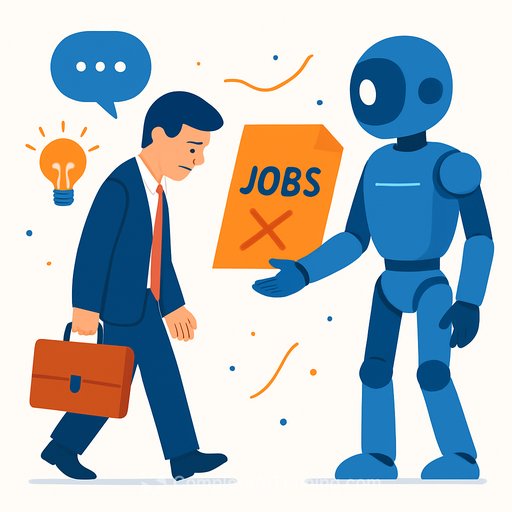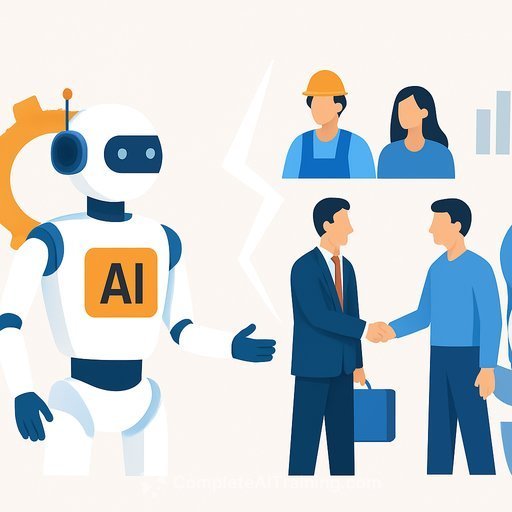Global AI Workforce Reaches 3 Million, But Talent Concentration Remains a Challenge
A recent report from the International Finance Forum and Deep Knowledge Group reveals the global AI workforce now numbers around three million professionals. However, this talent is unevenly spread, with 70% concentrated in just five countries: the U.S., Mainland China, India, the U.K., and Canada. The U.S. and China alone account for 57% of all AI specialists worldwide.
This uneven distribution has significant implications for HR leaders and organizations aiming to build or expand AI capabilities. A talent pool heavily skewed toward a few nations means global competition for AI professionals is fierce, and critical skills shortages are emerging in many economies.
AI Talent Density Varies 50-Fold Across G-20 Nations
The report measures AI specialists per million people and finds a staggering 50-fold difference among G-20 countries. Singapore leads with over 7,500 AI professionals per million residents, while Brazil has fewer than 70. South Korea follows as the highest within the G-20 proper, with about 1,059 per million, while several large economies lag below 200.
For HR teams, this means hiring strategies must account for local talent availability, and investments in training may be critical in regions with low AI specialist density.
Vacancy Rates Signal Growing Talent Shortages
Eight out of the top 20 economies report AI job vacancy rates above 25%. Employers in these countries are turning to imports of AI specialists, automating less-skilled roles, or delaying projects altogether. This dynamic further widens the gap between talent-rich and talent-poor markets.
For workforce planners, this highlights the urgency of proactive talent acquisition, retention initiatives, and upskilling existing employees to avoid stalled AI projects and lost competitive advantage.
Country-Specific Trends Affect AI Talent Pools
- United States: Holds the largest absolute number of AI professionals and benefits from high labor market fluidity, with specialists cycling through nearly four prior roles on average.
- Mainland China: Focuses on reducing time-to-expertise through state funding and repatriation programs; over 12,800 senior scientists have returned since 2018.
- India: The third-largest source of AI manpower globally, despite a lower AI density of 143 per million, and the largest exporter of senior researchers to U.S. labs.
- Japan and South Korea: Smaller populations but strong graduate-school networks linked to semiconductor strategies, resulting in high per-capita AI specialist numbers.
- Middle East: UAE and Saudi Arabia have climbed into the global top 20 for AI talent share and growth, aided by targeted visa reforms. Saudi Arabia relies on foreign nationals for 65% of its AI workforce.
What This Means for HR Professionals
AI talent isn’t just about numbers—it’s a strategic resource that impacts economic growth, defense capabilities, healthcare innovation, and overall competitiveness. For HR teams, this means:
- Recruitment: Build flexible sourcing strategies that include international talent and remote work to mitigate local shortages.
- Training: Invest in upskilling programs to grow in-house AI capabilities, especially in regions with talent scarcities.
- Retention: Develop career pathways that encourage AI professionals to stay, reducing brain drain.
- Policy Awareness: Stay informed on immigration and visa policies, as these can directly affect talent availability, especially in fast-growing hubs like the UAE and Saudi Arabia.
Additional Insights from the Report
- Only about one-third of AI professionals work in pure research or engineering roles; most contribute in product development, policy, or business functions.
- 88% of AI specialists hold a master’s degree or higher, and 80% have entered the field within the last three years, reflecting rapid growth following the rise of large language models.
- The U.S. labor market exhibits greater movement among AI professionals compared to China, which may impact talent retention strategies.
For HR leaders looking to strengthen AI capabilities, these findings underscore the importance of aligning recruitment, training, and retention policies with global talent realities. Failing to address these gaps risks falling behind in AI-driven innovation and competitiveness.
Explore practical AI training programs and courses to help your workforce stay ahead at Complete AI Training.
Your membership also unlocks:






